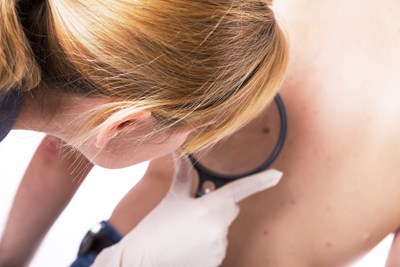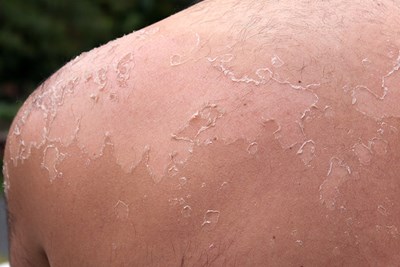Prevention
There is not one person who is not fearful of the word 'Cancer'. The most common form of cancer is skin cancer, so it is a good idea to schedule a skin examination at least yearly with a quality dermatologist. Taking proactive action and having a skin check done every year or more often as needed could save a life.Melanoma is a dangerous form of skin cancer. Although, some people are fortunate to develop a form of skin melanoma that is easy to treat with a 100 percent cure rate. The following steps are important for everyone to take to eliminate their questions and fears of skin cancer.
To avoid skin cancer, be proactive and remember to take these steps:
- Limit time in the sun
- Avoid sunbathing
- Monitor any moles, abnormal moles, and their changes in characteristics. It is a good idea to take a picture of the mole, while monitoring the area. This will show definitive changes to the area and will be helpful for the doctor
- Find out your family history of melanoma
- Fair-skinned people are more prone to melanomas
- People prone to freckling are prone to skin cancer
- Those who have experienced severe sun burns are more prone to skin cancer
- See the doctor if you have a mole that is bleeding, tender, scaly, itchy, oozing or painful
- Monitor hands, arms, chest and head as these areas are susceptible to the sun
- A head to foot body check is ideal, using a mirror to see hard to view areas. Start at the head and proceed down the body. Check the front, back, sides, fingernails, toenails, between fingers and toes, the groin and soles of the feet. Check all areas of the front and back of the legs, including behind the knees. If the person finds any questionable areas, they need to see their primary doctor at once.
Colors of Moles
A good practice in monitoring moles is to look for any mole where one side of it is different from the other side. As a rule, a suspect mole will have ragged edges. The outside of the mole will be irregular. Moles present differing colors and can vary from white, red, brown or black. If the mole is larger than 6 millimeters or the mole appears to arise from the skin surface make an appointment with the primary doctor.
Why is a Skin Biopsy Necessary?
The dermatologist will take a biopsy of the skin area. A skin biopsy will tell the doctor how deeply the mole is, into the skin. This is the only way to be sure that the person is dealing with skin cancer. The doctor needs the biopsy in order to know how to treat the area. The biopsy will tell the doctor if the mole is benign or malignant cancer, or not cancerous at all.
Skin Cancer in Male and Females
For some reason men are more susceptible to skin cancer on the back and skin cancer attacks women in areas of the lower leg. It is well worth a person's effort to research pictures of cancerous moles. In this way, the person can see what they are supposed to be looking for. This will help the doctor and dermatologist.
Quick Action Can Save A Life
If one finds a suspicious mole, it will necessitate an appointment to the general practitioner as soon as possible. If the person's primary care physician feels the person needs to see the dermatologist they will be able to get the person an appointment much sooner than if the person tried to schedule a quick appointment.



